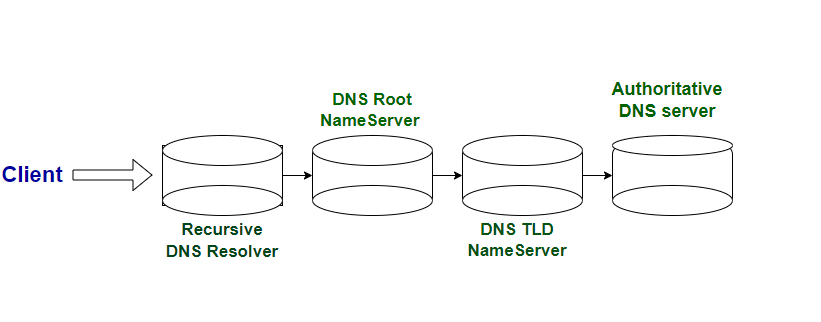A DNS resolver, also known as a DNS resolver server or simply resolver, is a crucial component of the Domain Name System (DNS). When the DNS resolver receives your request, it queries the Domain Name System to determine the IP address. These queries may be “recursive,” “non-recursive,” “iterative,” or a combination of these.

Its primary function is to translate human-readable domain names into IP addresses, allowing computers to locate and connect with each other over the Internet. The DNS resolver is a crucial part of the DNS resolution process, facilitating the translation of domain names to their corresponding IP addresses.
Here’s how the DNS resolver works:
- User Input or Application Request:
- When a user enters a domain name into a web browser or any other network application, or if an application initiates a network connection using a domain name, the request is sent to a DNS resolver.
- Querying the DNS Hierarchy:
- The DNS resolver starts by checking its local cache to see if it already knows the IP address associated with the requested domain name. If the information is not found in the cache or if the cache entry has expired, the resolver proceeds to query the DNS hierarchy.
- Recursive Query:
- Iterative Queries:
- The resolver continues to make iterative queries, moving from the root DNS servers to the authoritative servers for the TLD, and then to the authoritative servers for the target domain. At each step, the resolver is directed to the next set of DNS servers until it reaches the authoritative server that holds the specific DNS record for the requested domain.
- Obtaining the IP Address:
- Once the authoritative DNS server is reached, it provides the IP address associated with the requested domain name. The resolver caches this information for future use and returns the IP address to the user’s application.
- User Application Connection:
- With the IP address obtained from the DNS resolution process, the user’s application can establish a connection to the desired server or website.
DNS resolvers are typically operated by Internet Service Providers (ISPs), network administrators, or third-party DNS service providers. Users can also configure their devices to use specific DNS resolver servers. Popular public DNS resolver services include Google Public DNS, OpenDNS, and Cloudflare DNS. These services aim to provide fast and reliable DNS resolution for users.
Note that this complete sequence of queries is not necessarily performed every time a request is made. At each step, a server in the DNS may respond with its cached copy of the information. How often these caches expire and the information refreshed depends on the operator of the DNS.
If the DNS is recursive, as in this example, the DNS resolver may be called a recursor.